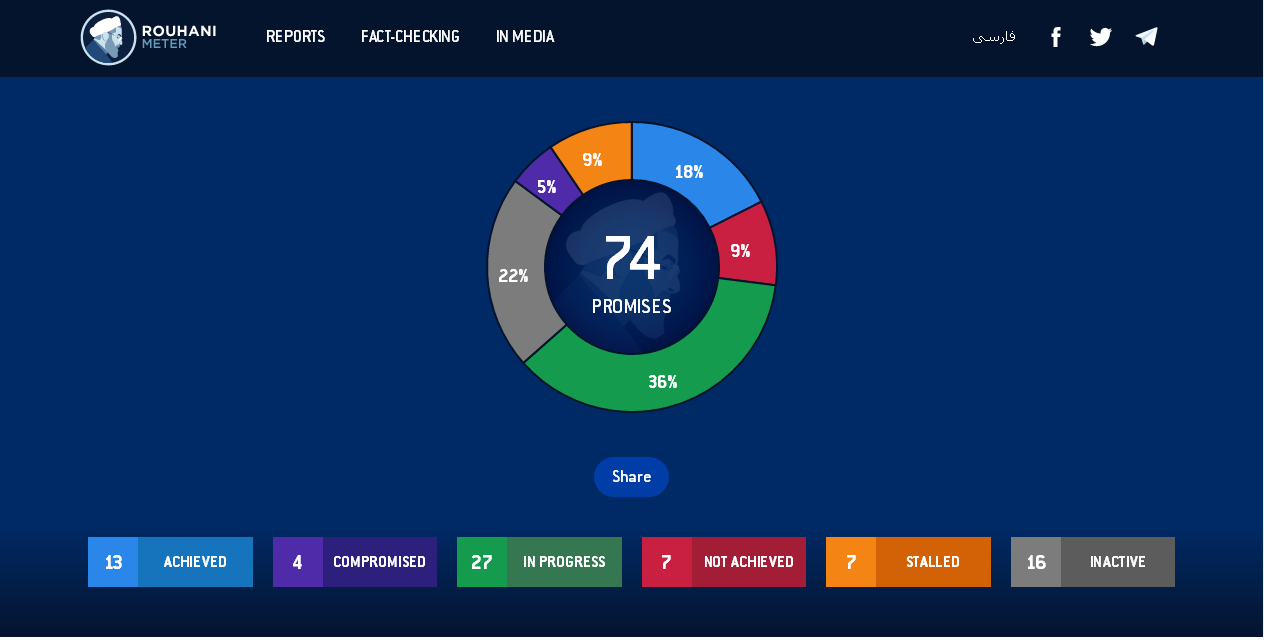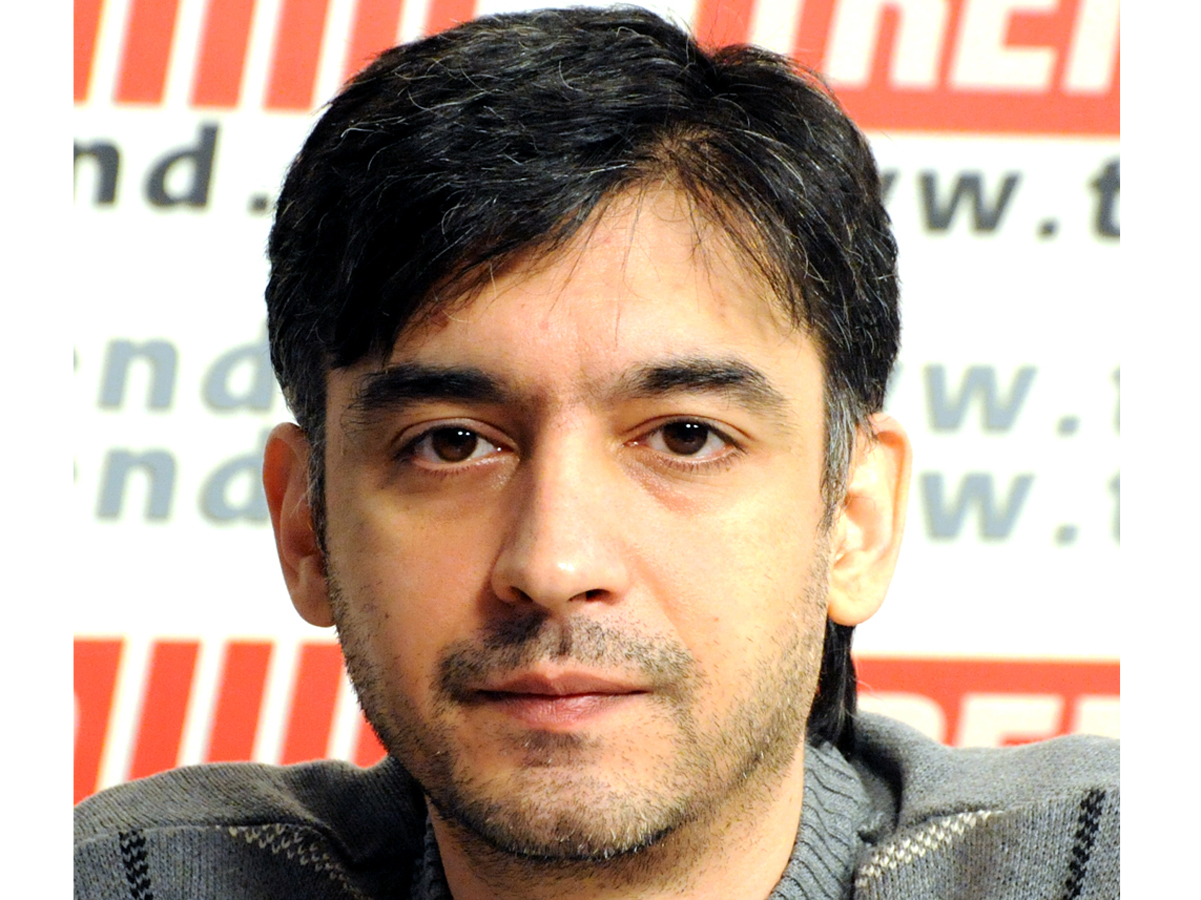Baku, Azerbaijan, Sept. 12
By Umid Niayesh – Trend:
Three years ago, on a June night, just like many Iranians I did not sleep a wink as I was following the results of the presidential election. My candidate of choice was Hassan Rouhani, a man with intelligence and not social or cultural backgrounds, who was less known in Iranian society before starting his presidential campaigns.
However, thanks to the concerns over a repeated social and economic turmoil with possible election of another radical president like Mahmoud Ahmadinejad, and through the generous support of Iranian reformists and of course his own powerful campaign, Rouhani raised his popularity from below 10 percent to over 50 percent in only a few weeks to outrun all five conservative rivals.
On the eve of the presidential inauguration in August 2013, the Toronto University in Canada launched Rouhani Meter, an initiative to measure the president’s loyalty to his campaign promises.
The website has been tracking 74 promises that Rouhani made during the 2013 campaign – it rates the Iranian president’s promises as “in progress,” “inactive,” “achieved,” “compromised” (partially achieved), “stalled” and “not achieved.”
Given that in the third term of Rouhani’s presidency the upcoming May 2017 presidential election is gradually becoming a popular topic in Iran, I visited the Rouhani Meter website to check its assessments about the realization of the promises of the Islamic Republic’s pragmatist politician.

The website says that only 13 of Rouhani’s 74 presidential promises have been achieved (18 percent), while 27 promises (36 percent) are still in progress.
Twenty-two percent of the campaign promises are inactive, 9 percent are stalled, 9 percent have not been achieved, and 5 percent have been achieved partially.
Among Rouhani’s most notable promises was to look into ending the house arrest of the opposition leaders, Mir Hossein Mousavi and Mehdi Karroubi. The two were put under house arrest in 2011 after refusing to comply with election results and stop their pleas to the public for protests. There have been no official charges against them, nor any trials. The promise, which is important for Rouhani’s reformist supporters, is rated by the Rouhani Meter as inactive, meaning there is no discernible action being made on the promise.
This is while, the promises to attempt to transfer Iran’s nuclear dossier out of the UN Security Council as well as reduce and lift sanctions are currently rated as “in progress.” However, it seems the site has not made any updates in this regard, as these promises were fulfilled with the last year’s historic nuclear deal with six world powers, which should be considered as Rouhani’s most important economic and political achievement.
Rouhani’s promises to lower the inflation rate to below 25 percent, engage constructively with the world, prevent further sanctions in the future and provide a universal health insurance are rated as “achieved” by the website, which is blocked inside Iran.
Providing security for women in public places, improving bilateral relations with the Persian Gulf states, especially Saudi Arabia, and establishing a ministry of women are among his promises that have not been realized so far.
Rouhani has also failed so far to materialize the promises regarding the rights of the ethnic groups, who honestly supported him during the presidential election. For instance, the establishment of an academy of Azerbaijani language and literature is not achieved, while instructing the literature of minorities in schools and securing equal rights for all the Iranian ethnic groups are ranked among “in progress” promises.
Rouhani’s disappointing performance in cultural and social issues and his fragile relations with reformist supporters has led to speculations about the fall of his mass popularity. Some reformists are now talking about the possibility of introducing another candidate in the upcoming presidential election. On the other hand, the radical conservatives, who are especially unsatisfied with the nuclear deal, speculate in their powerful media that Rouhani will fail in the upcoming election and will be the first president in Iran’s history elected to the office only once, unlike his successors who have served two terms in the office.
Some observers also compare Supreme Leader Ayatollah Ali Khamenei’s statements in the last year of Rouhani’s presidency with his words in the last year of Ahmadinejad’s first presidential term, concluding that the country’s first person is also not satisfied with the president’s policies and prefers to continue the next term with another person.
Rumors about Khamenei’s health condition and the possibility that Iran may see a new leader in the next four years have actually increased the importance of the upcoming presidential election. Therefore, the person who will lay claim for the president’s chair may also be a hopeful as the next supreme leader of the Islamic Republic, or at least can play a decisive role in electing a new leader.
It is too early to forecast on the next Iranian president, because as they say, 24 hours is a long time when we are talking about politics. However, given the Iranian social and political realities, most likely the Iranians will see Rouhani as the president for another four-year term, despite all the dissatisfactions, failures and problems.
The conservatives have no chance as they lack any powerful candidate like Rouhani, and reformists have no choice rather than dressing again a reformist robe for the 68-year-old conservative cleric.
---
Umid Niayesh is Trend Agency’s staff journalist. You can follow him on Twitter: @UmidNiayesh






